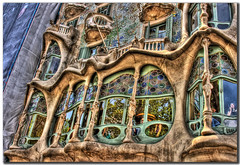En América Latina el culto a la virgen María está presente en cada uno de los 21 países de la región, tanto así que inclusive cada país tiene su propia versión de la virgen. El marianismo es todo un culto de adoración a María madre de Dios y se le atribuyen poderes superiores que tienen la capacidad de ayudar e interceder, además de dar fortaleza a todo aquel que se lo pida. La virgen María está representada como una mujer pura, humilde, bondadosa, capaz de hacer grandes sacrificios y de una fortaleza infinita. Todavía hoy se educa a las mujeres latinoamericanas bajo la idea que es bueno parecerse a la virgen María.
Tres destinos y tres versiones de LA VIRGEN
1. Virgen de los Ángeles, la "Negrita"- Patrona de Costa Rica
2. Nuestra Señora de Guadalupe - Patrona de las Américas
3. Virgen de la Caridad del Cobre - Patrona de Cuba

Declarada patrona de los católicos de Costa Rica y protectora de los católicos de las Américas por el papa Juan Pablo II. La Fiesta de Nuestra Señora de los Ángeles se celebra en Costa Rica cada 2 de Agosto en conmemoración del hallazgo en 1635 de una pequeña estatua de la Virgen María con su hijo.
Este es una foto que yo saqué cuando estaba en Costa Rica. Esta niña estaba lavando su bebe mientras que yo llené mi botella con el agua bendecida. El arroyo de agua apareció con la virgen muchos años pasados.
¡Pienso que esta niña era muy linda!
¡Pura vida!






